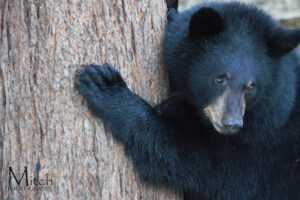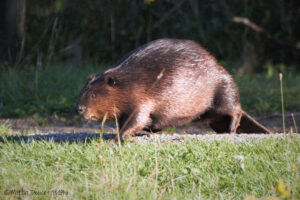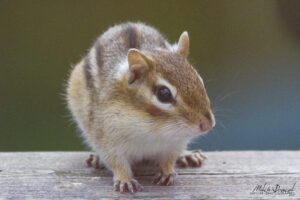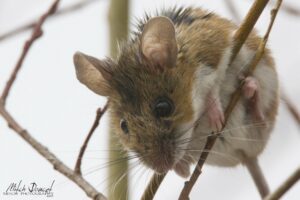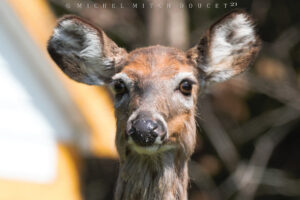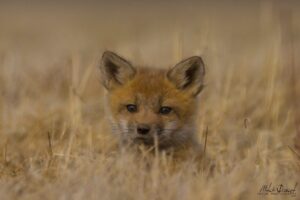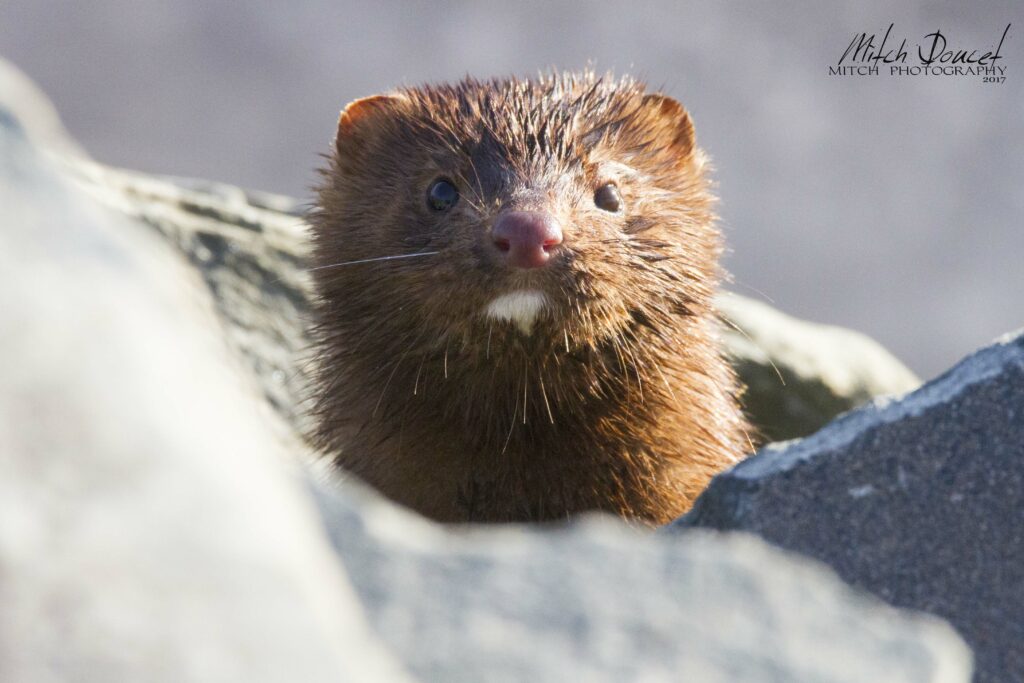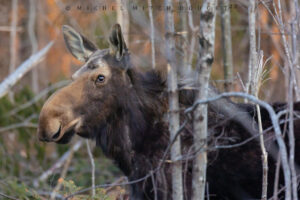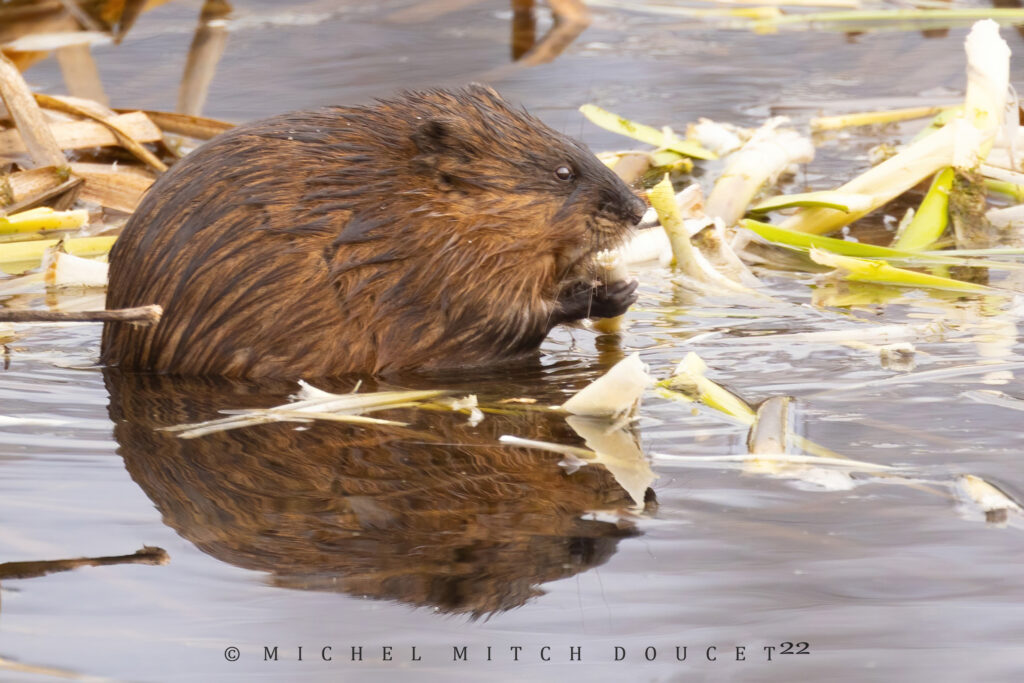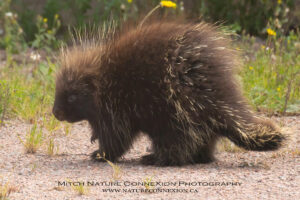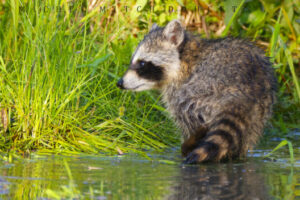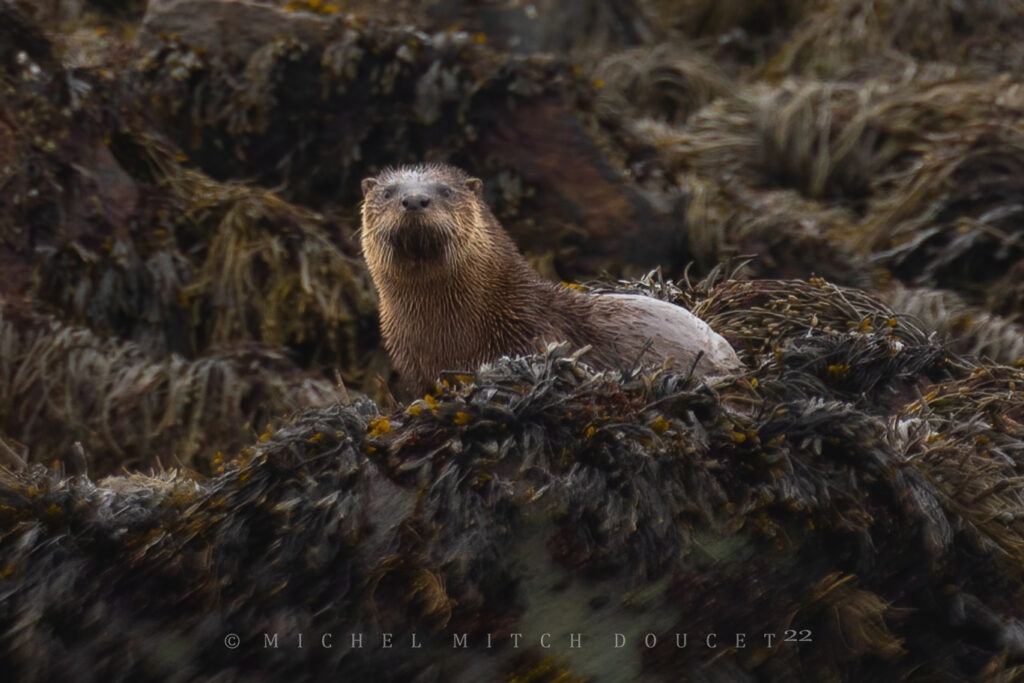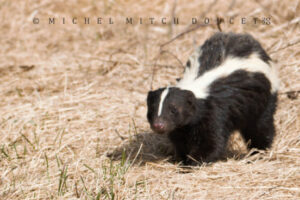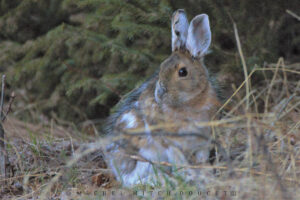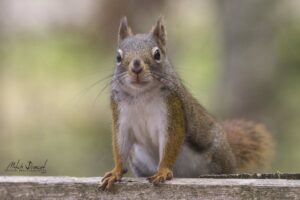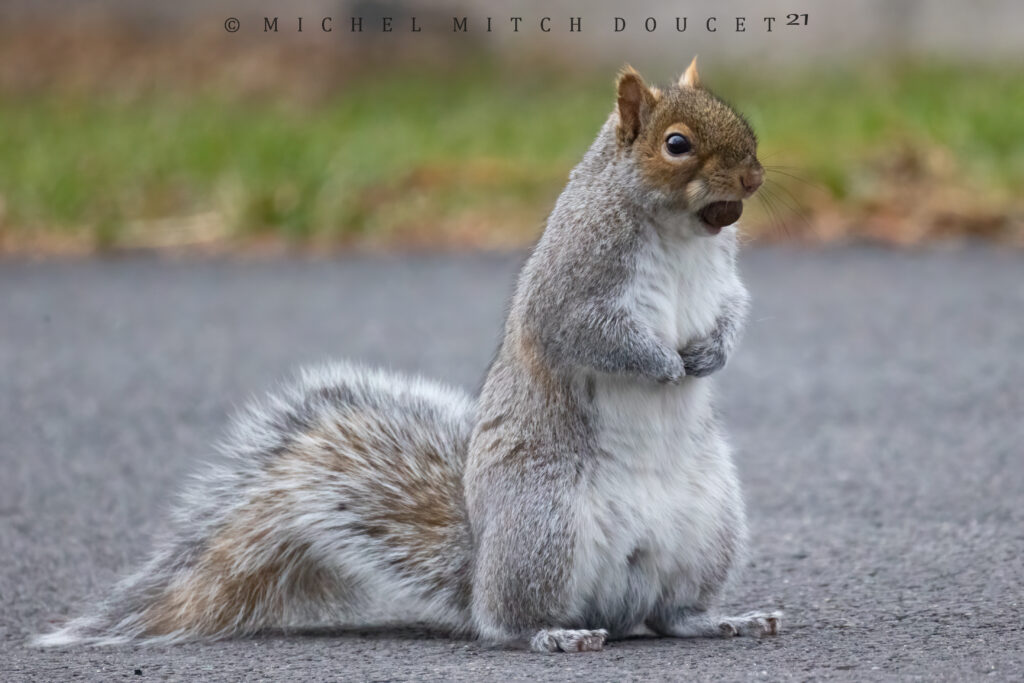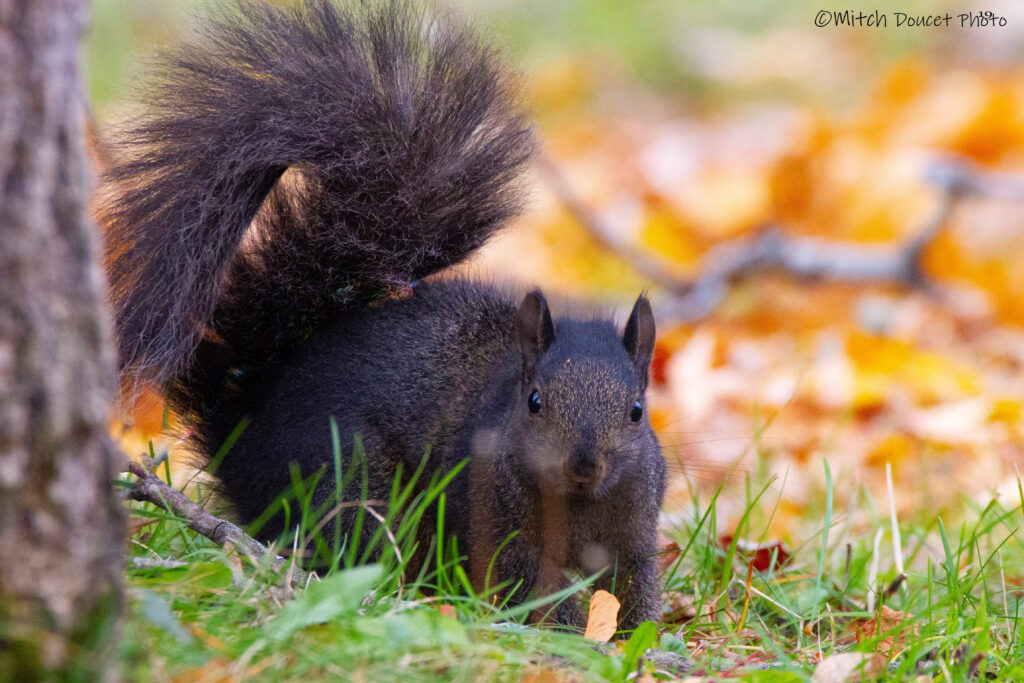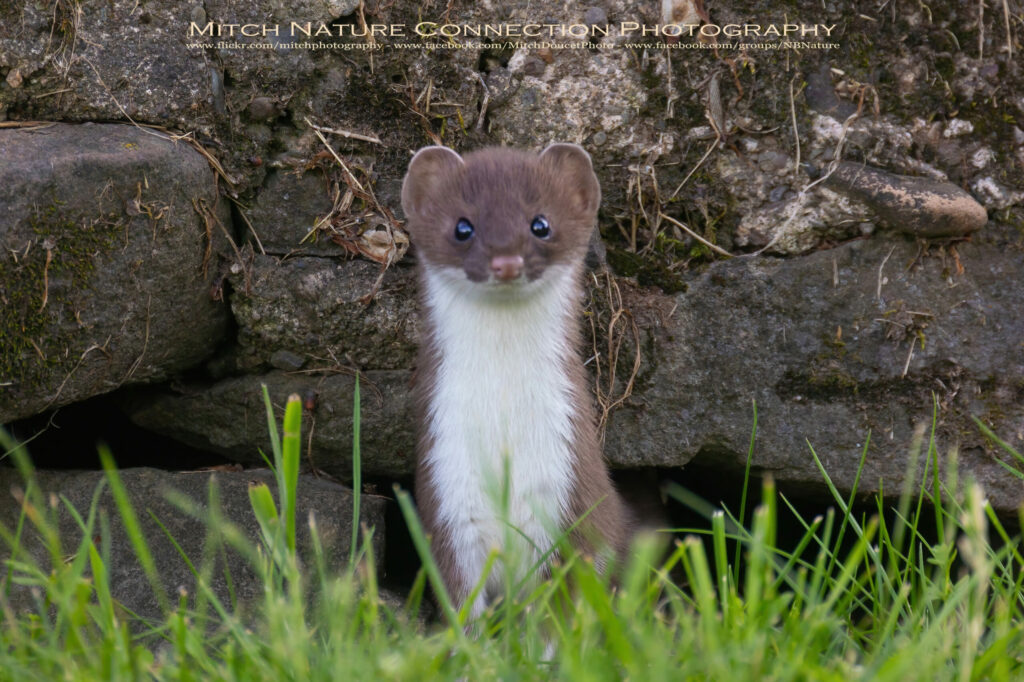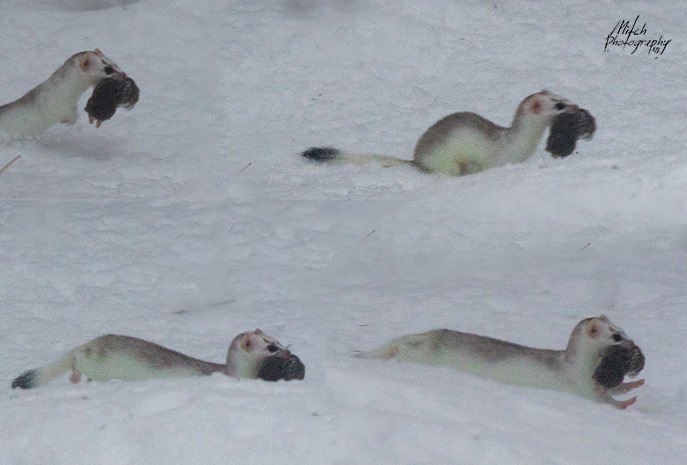Atlantic Canada Wildlife
Photography by Mitch Doucet
It’s not all about the birds and the bees,
sometimes we run into wildlife.
Please enter your comments, questions, or feedback below, Thank you!
Few animals have captured the imagination like brown bears. They can stand on two legs, walk on the soles of their feet, pick things up with their “fingers,” and often eat what we eat. This—coupled with their ability to communicate with one another through scratch marks left on trees, smells and sounds—establishes a similarity to our own way of life. Some of the largest living carnivores, brown bears have fallen prey to hunting and other conflicts with humans.
Reference: World Wildlife Fund
The American beaver’s most noticeable characteristic is the long, flat, black tail. A beaver’s tail not only helps it swim faster, but can also be used to make a loud alarm call when slapped against water. In addition, the large tail helps the beaver balance when carrying a heavy log or tree trunk.
Reference: National Wildlife Federation
Chipmunks are part of the squirrel family, and while they look similar to their bushy-tailed cousins, chipmunks are actually smaller, with alternating light and dark stripes along their cheeks and backs.
Reference: National Geographic
The eastern coyote is a wild North American canine hybrid with both coyote and wolf parentage. The hybridization likely first occurred in the Great Lakes region, as western coyotes moved east.
Reference: Wikipedia
Deer mice are a species of rodent that get their name because their fur closely resembles that of a deer, but don’t be fooled by this deceptively cute rodent. Deer mice present serious medical concerns as they can be carriers of Hantavirus. If you suspect an infestation, it’s crucial to learn how to get rid of deer mice.
Reference: Pest world
The graceful white-tailed deer Odocoileus virginianus is well known to most North Americans. Hunters and nonhunters alike recognize the animal by its habit of flourishing its tail over its back, revealing a stark white underside and white buttocks. This “flag” of the white-tailed deer is often glimpsed as the high spirited animal dashes away from people. The tail has a broad base and is almost a foot long. When lowered, it is brown with a white fringe.
Reference: Wildlife Canadian Federation
Red foxes have long snouts and red fur across the face, back, sides, and tail. Their throat, chin, and belly are grayish-white. Red foxes have black feet and black-tipped ears that are large and pointy. One of the most noticeable characteristics of the red fox is the fluffy white-tipped tail. Red foxes are about three feet long and two feet tall.
Reference: National Wildlife Federation
Also known as woodchucks, groundhogs spend much of their days alone, foraging for plants and grasses and digging burrows up to 66 feet long. So though Phil might be a celebrity once a year, the rest of the time he probably prefers his me-time. Groundhogs often burrow under open areas such as meadows and farmlands, which can make the critter a nuisance to farmers. But burrows are super important to groundhogs—and their ecosystem.
Reference: National Wildlife Federation
The American mink usually has dark brown fur, looking black when wet. It has small and variable white patches on the chin, throat, chest and groin, which are more evident on a carcass. The American mink also has a short fluffy tail. It is of similar size to ferret or polecat and is much smaller than an otter.
Reference: Mamals Society
Moose are the largest members of the deer family, standing six feet (1.8 meters) tall from hoof to shoulder, and weighing in at more than 1,000 pounds (450 kilograms). Each of their light to dark brown hairs is hollow, and the air trapped inside provides insulation. A flap of skin called a dewlap hangs from the throat. Males are distinguished from females by their antlers, which grow up to six feet across.
Reference: National Wildlife Federation
Muskrats live on or near bodies of water – lakes, creeks, and rivers. Muskrats are the only semi-aquatic rodent, almost a miniature beaver. Often, muskrats will share a beaver den during the winter months. An adult muskrat is about 16 to 24 inches long – almost half of that is the tail – and they weigh one to four pounds.
Reference: Operation Wildlife
Porcupines are lumbering, rotund rodents with needle-like spikes, called quills, covering their back, sides, and tail.
A single porcupine can have more than 30,000 quills, which are actually sharp bristles of fused hair. Porcupines don’t “shoot” or throw their quills. Instead, when another animal attacks the porcupine, its quills detach, burrowing into the adversary’s flesh and inflicting painful, potentially deadly wounds.
Reference: National Geographic
Raccoon’s face has several markings that help it stand out. The most noticeable marking is the black “mask”—large black markings around each eye. They extend from the edge of the nose to the lower part of the cheek. In addition, raccoons have whitish patches on top of the eyes and around the nose. Raccoons have grayish-brown fur over most of their body, and their tails have four to six black rings.
Reference: National Wildlife Federation
The playful North American river otter is well adapted for semi-aquatic living. The mammals have thick, protective fur to help them keep warm while swimming in cold waters. They have short legs, webbed feet for faster swimming, and a long, narrow body and flattened head for streamlined movement in the water. A long, strong tail helps propels the otter through the water. They can stay underwater for as many as eight minutes. North American river otters have long whiskers, which they use to detect prey in dark or cloudy water, and clawed feet for grasping onto slippery prey.
Reference: National Wildlife Federation
Skunks are most active at night. They sleep in dens lined with leaves during the day. Their favorite foods include fruit and plants, plus insects, bird eggs, small rodents, and birds. Birds like the great horned owl prey on skunks. Scientists believe it’s because the birds don’t have a very good sense of smell, which makes the skunk’s spray useless in an attack.
Reference: National Geographic
Snowshoe hares have an interesting adaptation that helps protect them against predators. Depending on the season, their fur can be a different color. During the winter, snowshoe hares are white, which helps them blend in with the snow. When the seasons change to spring and summer, snowshoe hares turn a reddish-brown. This color helps them camouflage with dirt and rocks.
Reference: National Wildlife Federation
The most noticeable characteristics of the American red squirrel are the tail and the eye ring. The tree squirrel’s tail is bushy and dark red with hints of a white outline. The eye ring is a thick, white circle around the rodent’s black eyes. American red squirrels are about 12 inches and have grayish, red, or rust-colored fur with a white belly. Sometimes a black stripe can be seen on the sides.
Reference: National Wildlife Federation
The eastern gray squirrel (Sciurus carolinensis), also known, particularly outside of North America, as simply the grey squirrel, is a tree squirrel in the genus Sciurus. It is native to eastern North America, where it is the most prodigious and ecologically essential natural forest regenerator. Widely introduced to certain places around the world, the Eastern Gray Squirrel in Europe, in particular, is regarded as an invasive species.
Reference: INaturalist
Black squirrels are not an individual species like red squirrels or the Eastern Gray Squirrel that is common throughout North America. Instead, black squirrels are members of various squirrel species. The only difference is that they have a hereditary abundance of melanin resulting in black morphs of existing species.
Reference: A-Z Animals
The least weasel, little weasel, common weasel, or simply weasel is the smallest member of the genus Mustela, family Mustelidae and order Carnivora. It is native to Eurasia, North America and North Africa, and has been introduced to New Zealand, Malta, Crete, the Azores, and São Tomé. Least Weasels are solitary carnivores with long slender bodies that are well adapted to moving through dense vegetation, debris and underground burrows
Reference: Wikipedia
A long slender body to aid in chase of small prey, with a black-tipped tail and fur that changes color from brown in the summer to white in the winter. This carnivore eats voles, mice, squirrels, frogs, and insects; and must eat two thirds of its body weight every day to meet its dietary needs. it lives in underground burrows, often around rocks or large brush piles for dens. It actively hunts under the snow in prey tunnels and may use the fur of its prey to stay warm in its burrow.
Reference: Maine.gov
